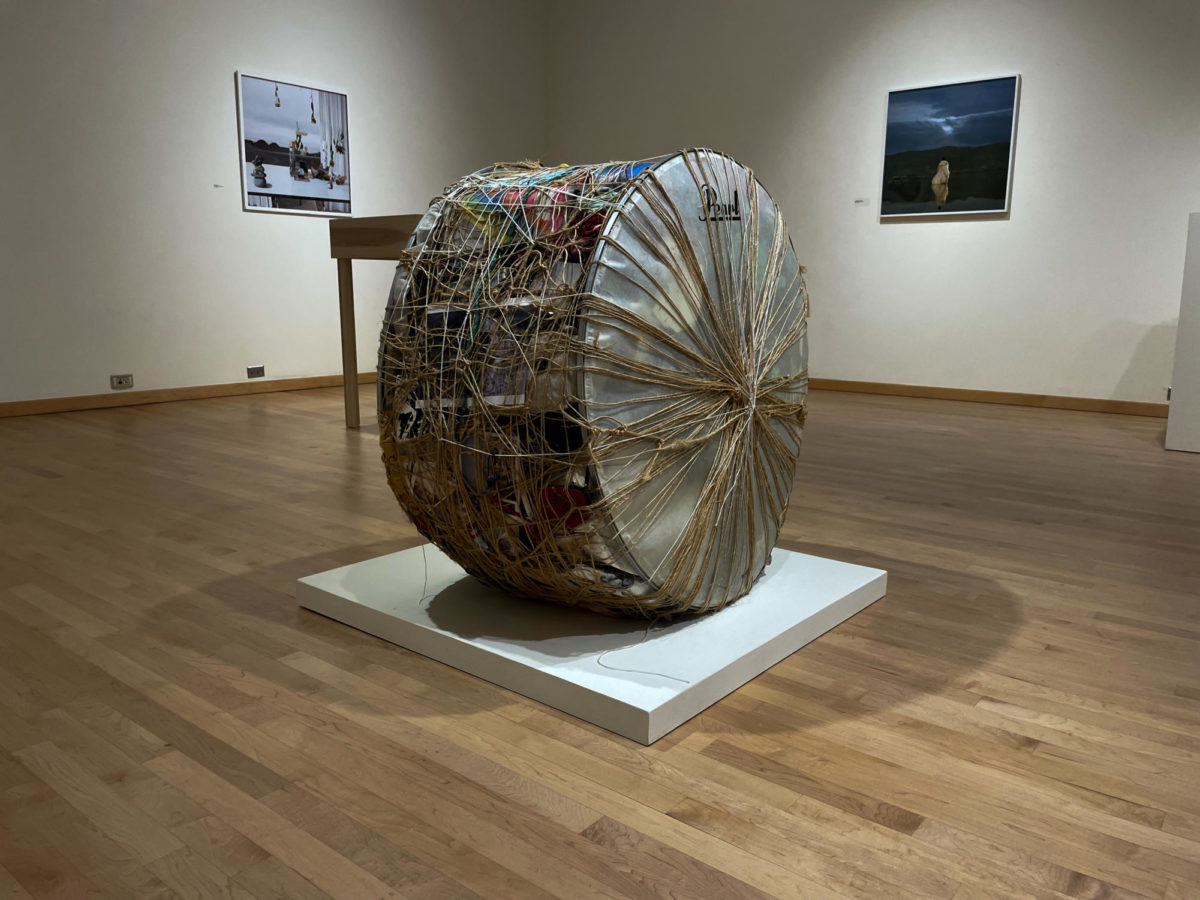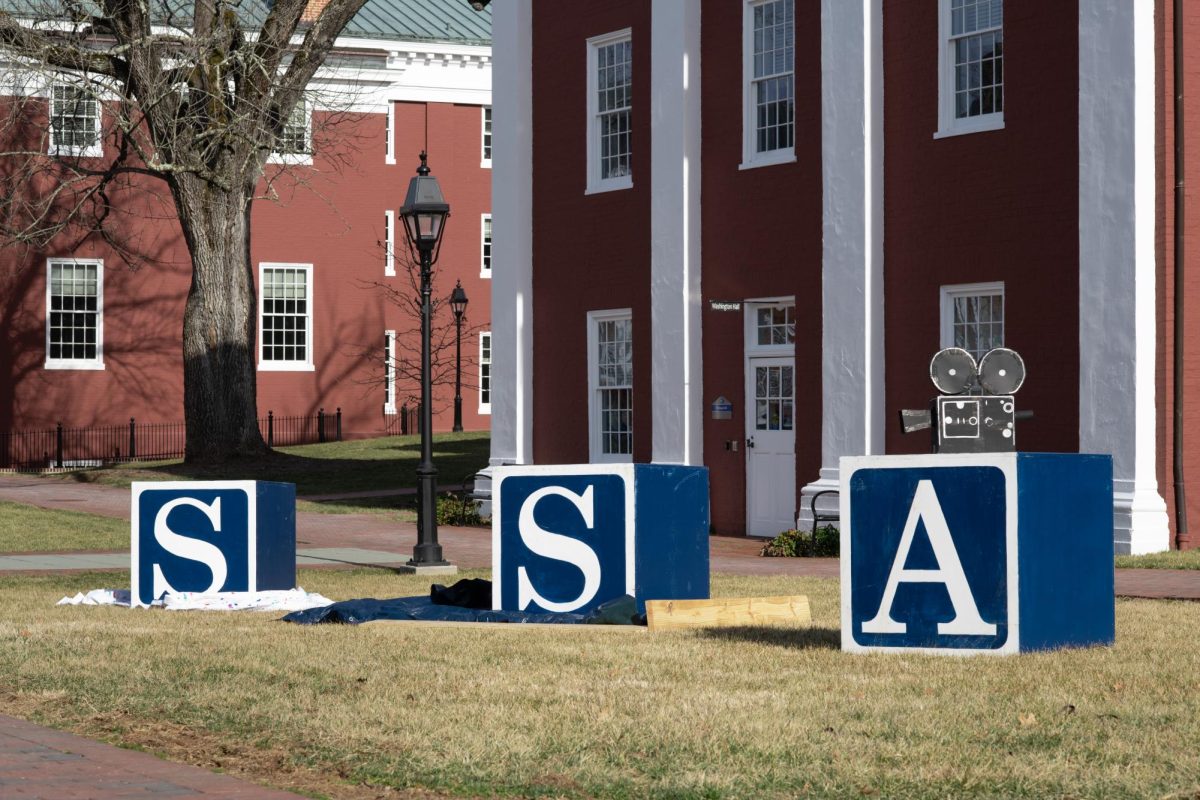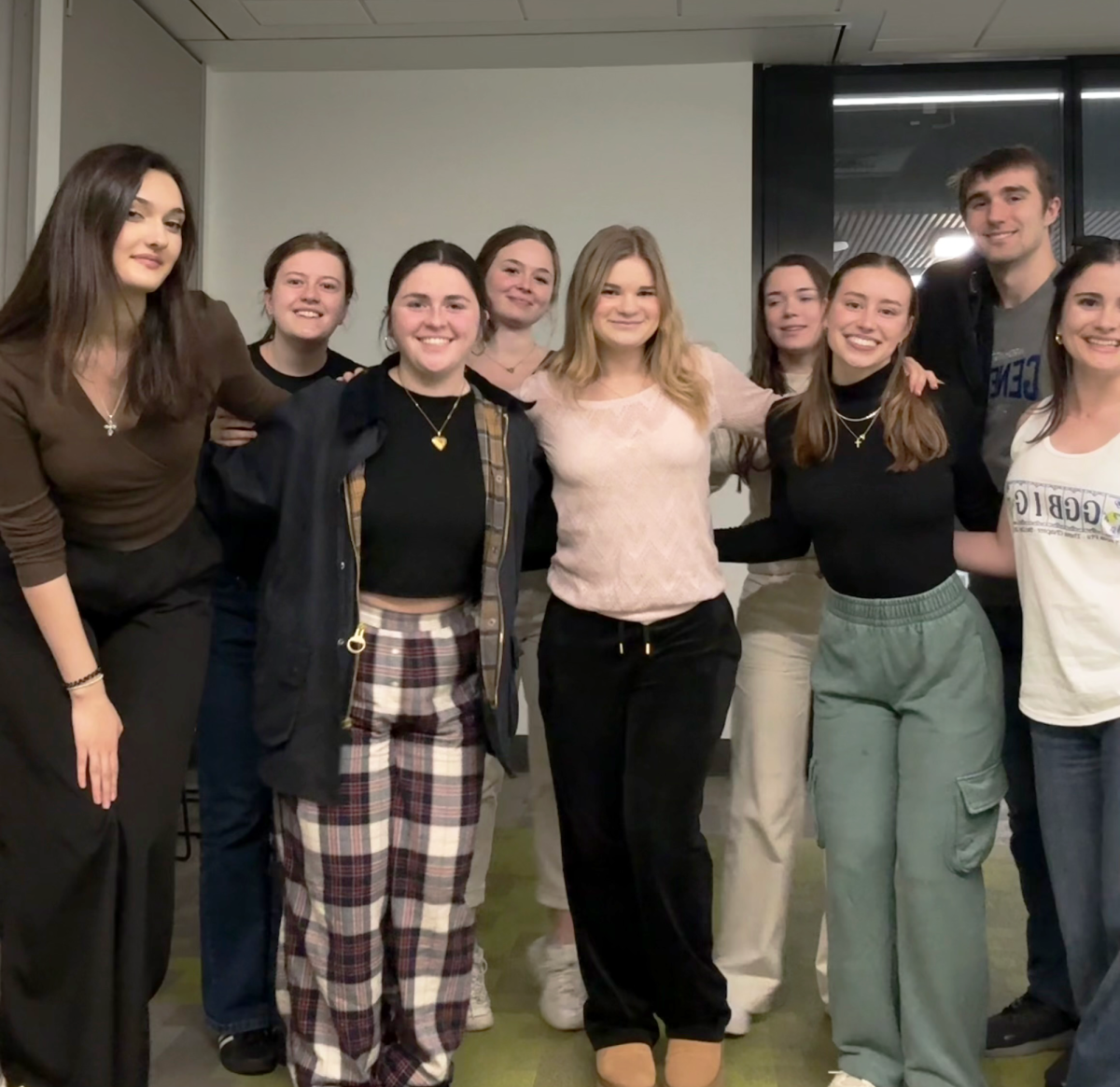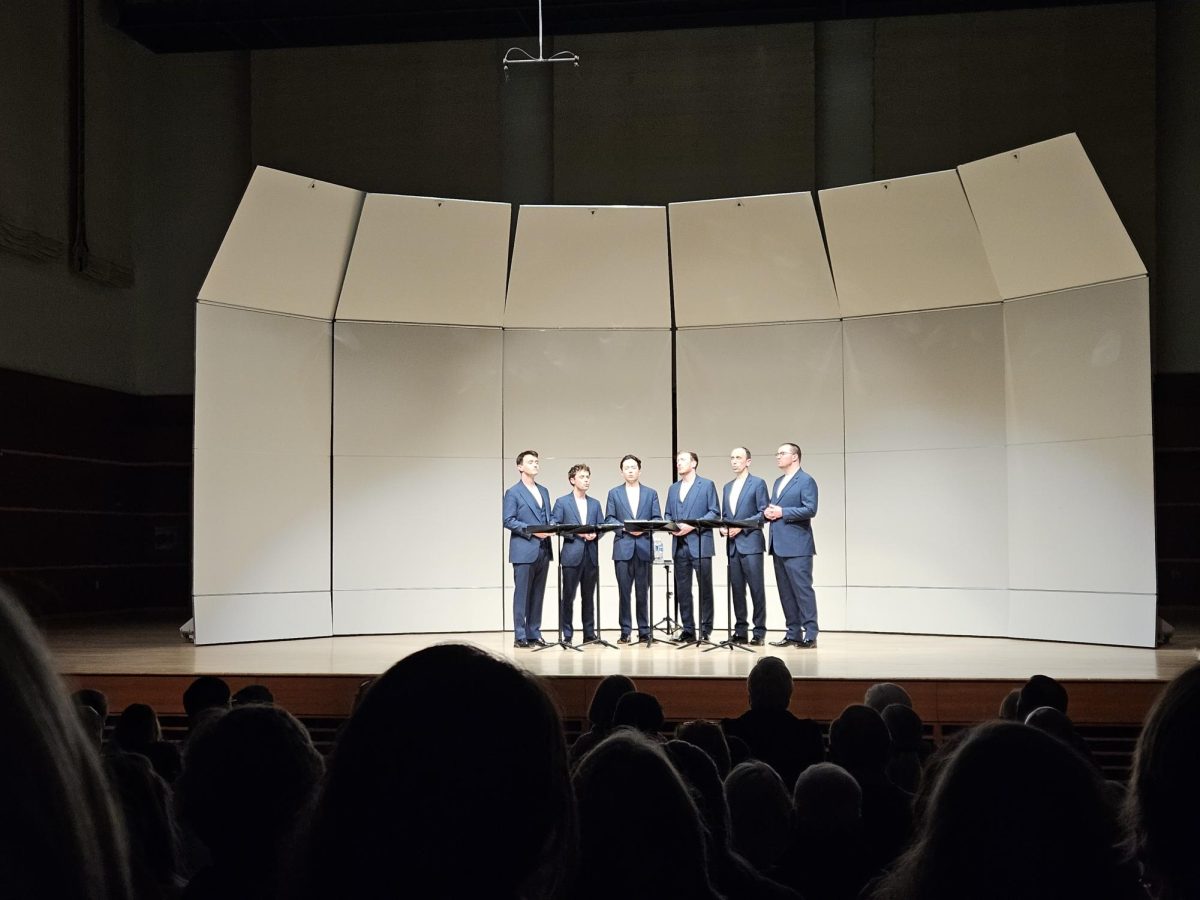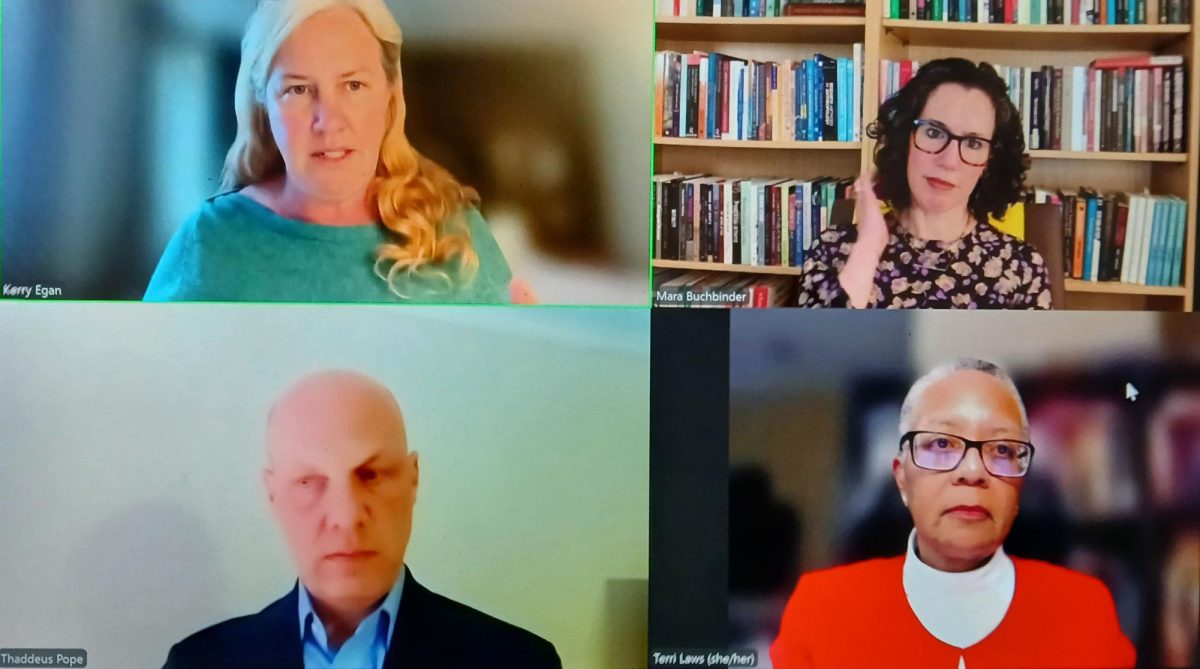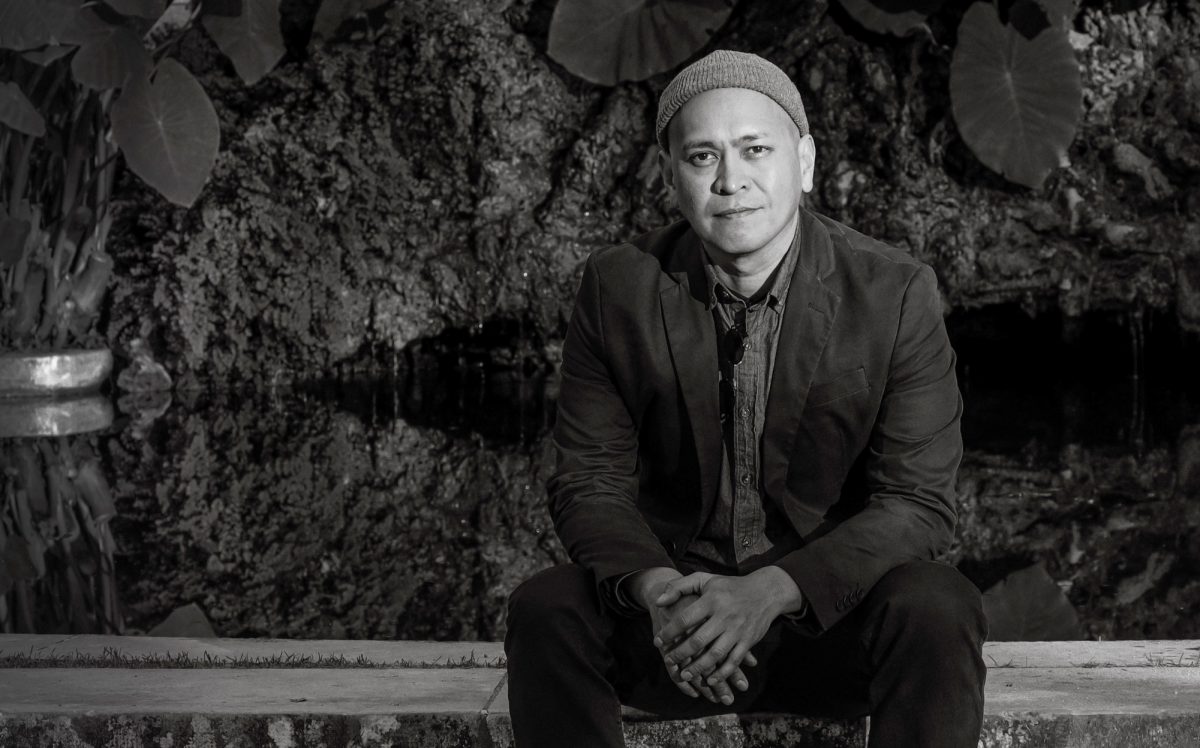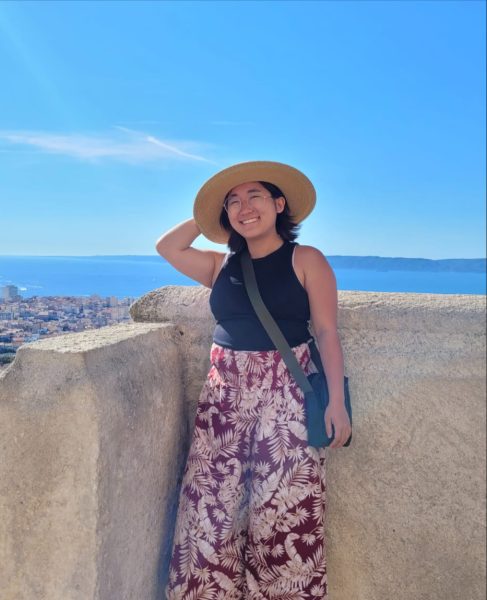Three large sculptures sit at the center of Staniar Gallery. Made up of clothes, books, dressers and other household items, these sculptures represent a lifetime bundled up and held together by only some twine and rope.
“They are these monuments to my own excess,” artist Mary Mattingly said.
Last Tuesday, the New York-based artist gave a lecture about her exhibited works and the ways they interact with her environmental activism.
Her multimedia exhibit, “Proposals,” was unveiled on Sept. 4. It includes a series of sculptures and photos tackling climate change and the culture of overconsumption prevalent today.
In 2006, Mattingly spent several months living on a floating self-sufficient barge called the “Waterpod” in the New York City waterways. When she returned back to land, she had to reconcile with the sheer amount of her possessions.
Mattingly said she lived a fairly minimalist and sustainable life while on the barge, so when she was faced with everything she owned, she started reflecting on the relationship people have with excess objects in their lives.
“How do our personal collections function as these monuments to ourselves, to our history, and to our consumptions?” she asked.
In the following years, Mattingly gathered all her personal belongings and arranged them into a series of large sculptures she would call “bundles.” She said the size and density of these bundles depicted the physical and psychological weight that overconsumption has on one’s life.
Additionally, she said that creating these bundles allowed her to explore what these objects reveal about things the people value and rely on in different stages of their lives and find out what people can learn from them.
Sandy de Lissovoy, assistant professor of art, said he found Mattingly’s work fascinating because of the way her art interacts with the world.
“Sculpture can be performative,” he said. “It can go out into the world and be in the environment and move around.”
He pointed to a photo in the exhibit titled, “Pull,” as an example. This photo depicted Mattingly pulling a large boulder-like bundle full of her belongings across the streets of New York City. The piece is a powerful commentary about the burden that overconsumption puts on people and the environment.
He explained that the photo spoke to him because the pulling movement of the boulder made it feel as if the art was being brought into the world– as something tangible and real– despite it being contained in a photo.
While at Washington and Lee, Mattingly worked closely with de Lissovoy and his class. In preparation for her visit, students created their own bundles filled with objects from their own lives.
Andrea Lepage, the interim director of Staniar Gallery, said Mattingly’s work was brought to W&L because it explores themes, such as climate change and water and food insecurity, that can be appreciated by students and faculty across departments.
“Mattingly’s environmental focus might also appeal to students studying environmental studies, taking classes in the Shepherd Program, working in the Campus Kitchen or pursuing other types of community-based learning,” she said.
De Lissovoy described some of Mattingly’s large-scale interactive sculptures as “crazy ideas” made possible through the creative lens of the art world.
One of her most famous works, “Swale,” was a floating forest on a barge that invited visitors to forage food from it. Active from 2016 to 2020, “Swale” sailed from pier to pier in order to sidestep New York state laws that forbade people from foraging and growing food on public land. Its mission was to advocate for the use of public land to grow food because many people in the city did not have access to healthy food.
Mattingly said that she hopes to continue development on “Swale” and eventually bring it back to the New York City waterways because of the positive impact it had on the city’s many food deserts.
Mattingly’s exhibit will be displayed to the public until Oct. 5.



